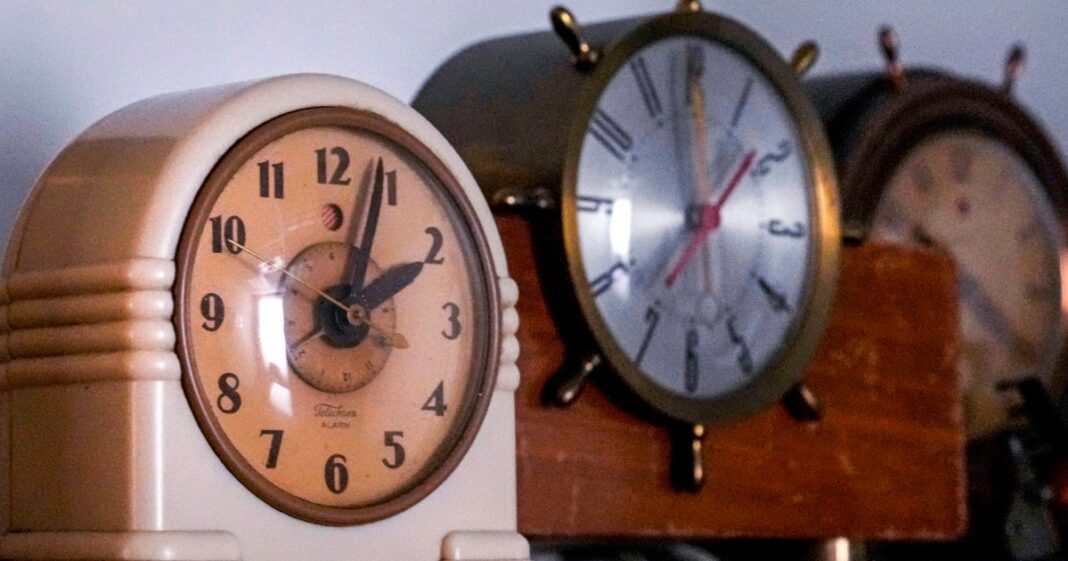It’s Time to Fall Back Again: Understanding Daylight Saving Time
As the clock approaches 1 a.m. this Sunday, it’s time once again to “fall back.” Daylight saving time (DST) is coming to an end, and for many, this means an extra hour of sleep. But have you ever wondered why we change our clocks twice a year? Let’s dive into the details.
When Does Daylight Saving Time End?
Daylight saving time began on March 9 and wraps up this Sunday, when most of the United States will revert to standard time. Unlike in the spring, when we “spring forward” and lose an hour, this transition will gift us an extra hour, as the clock will jump from 1:59 a.m. back to 1 a.m. As we head into late fall and winter, we’ll notice earlier sunsets, gently reminding us of the shorter days ahead.
How Long Does Standard Time Last?
Once we return to standard time, it will be here until spring. Standard time will remain in effect until March 8, 2024, when we once again set our clocks forward for daylight saving time, which will end on November 1, 2024. This cyclical change prompts those cozy evenings while ushering in the long, dark nights of winter.
Why Do We Observe Daylight Saving Time?
The roots of daylight saving time stretch back to the Standard Time Act of 1918, an initiative aimed at extending daylight hours during the summer months. By shifting sunset an hour later, we maximize the use of natural light in the evenings.
Despite its beneficial intentions, daylight saving time faced skepticism upon its introduction, leading to its repeal in 1919. Distrust turned into pragmatic necessity during World War II as it was reintroduced to conserve fuel. After the war, states exercised their autonomy regarding DST until the Uniform Time Act of 1966 standardized dates while allowing for local exemptions. Since 2007, DST begins on the second Sunday in March and concludes on the first Sunday in November.
Which States Don’t Observe?
While most of the United States participates in this twice-a-year clock ritual, Hawaii and most of Arizona don’t adjust their clocks. This steadfastness is shared by U.S. territories like American Samoa, Guam, Puerto Rico, and the U.S. Virgin Islands, which also maintain permanent standard time, foregoing the clock changes altogether.
Do Other Countries Do This?
Globally, the concept of daylight saving time exists, but schedules vary. Many countries in the Northern Hemisphere, particularly in Europe and North America, partake in this practice. However, hours and dates may not align with those observed in the U.S. In Southern Hemisphere countries, the start and end dates for “summer time” are flipped due to the opposite seasons. Only about a third of all countries observe daylight saving time, while many that once did have since abandoned the practice.
What Efforts Have Been Made to End the Practice?
There has been considerable discussion about the future of daylight saving time in recent years. The Sunshine Protection Act, passed by the Senate in 2022, sought to make daylight saving time permanent, though it failed to gain traction in the House.
Several states have attempted to legislate a shift to either permanent standard or daylight saving time, with 19 states putting forth bills in the past seven years. However, federal law currently restricts year-round daylight saving time, which means state legislation would hinge on congressional approval.
What Do Health Experts Say?
The debate around daylight saving time isn’t just about convenience; it intertwines with health concerns as well. Some studies have indicated that maintaining daylight saving time year-round could result in fewer traffic accidents and reduced crime rates.
Contrarily, a significant number of health experts argue against permanent daylight saving time. Proponents of standard time assert that the sun should reach its zenith around noon to align with our biological clocks. Sleep specialists have pointed out the advantages of transitioning the clocks as it aligns better with natural circadian rhythms. The darkness in the early morning hours helps regulate hormones, while extended daylight can lead to later bedtimes, potentially disrupting sleep patterns.
The Importance of Light and Timing
In essence, while the twice-yearly clock changes might seem trivial, they encapsulate a mix of history, practicality, and health considerations that affect our daily lives. Whether you’re a fan of the extra hour of sleep or prefer the longer evenings, the conversation surrounding daylight saving time is far from over.



